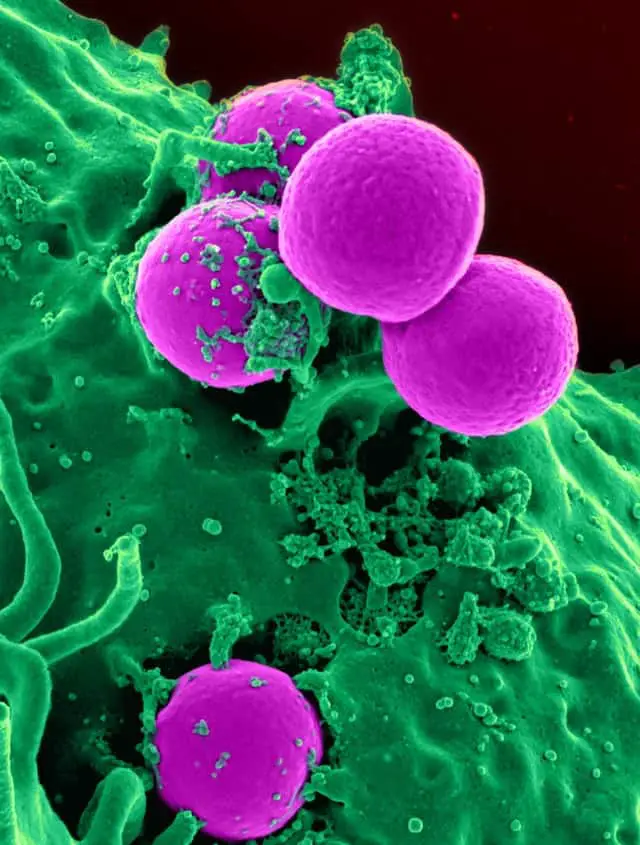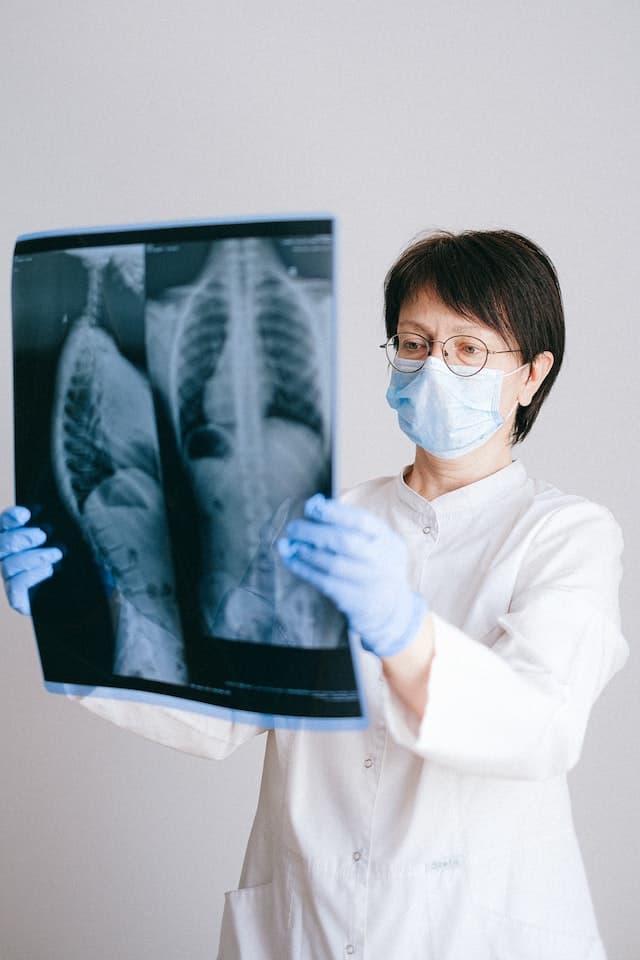What are the benefits of cilia? Have you ever wondered about the tiny hair-like structures called cilia that line your respiratory tract?
These remarkable microscopic appendages play a crucial role in facilitating movement and sensory perception within your body.
From helping to sweep away mucus and foreign particles to detecting changes in your environment, cilia are essential for maintaining proper functioning of various systems in your body.
One of the primary benefits of cilia is their role in the respiratory system.
Acting as nature’s broom, cilia constantly move in coordinated waves to push mucus and trapped particles out of your airways.
This helps to keep your lungs clean and clear, preventing infections and promoting healthy breathing.
Additionally, cilia also help filter out harmful substances such as pollutants, allergens, and bacteria from entering deeper into the lungs.
Without these vital structures, you would be more susceptible to respiratory illnesses and suffer from reduced lung function.
Facilitating Movement and Sensory Perception

Cilia, with their ability to both move and sense, play a crucial role in how organisms navigate and interact with their environment. In the human body, cilia are found in various systems, including the reproductive system and the digestive system.
In the reproductive system, cilia help facilitate the movement of eggs through the fallopian tubes towards the uterus. This movement is essential for successful fertilization and implantation of an embryo. Without cilia, this process would be significantly hindered or even impossible.
Similarly, cilia in the digestive system aid in moving food along the gastrointestinal tract. These tiny hair-like structures line the walls of organs such as the esophagus and intestines. By beating rhythmically, they create waves that propel food forward through peristalsis. This ensures efficient digestion and absorption of nutrients from our food.
Transitioning into discussing respiratory benefits of cilia without explicitly mentioning ‘step,’ it’s fascinating to note that cilia also play a vital role in our respiratory system. The air we breathe contains harmful particles such as dust, bacteria, and viruses. Ciliated cells lining our airways act as a defense mechanism by constantly sweeping these particles upward towards our throat where they can be swallowed or expelled through coughing or sneezing. Without this constant cleansing action performed by cilia, our lungs would be more susceptible to infections and respiratory illnesses.
Cilia are remarkable structures that contribute to various physiological functions within our bodies. They not only facilitate movement but also have sensory capabilities that allow organisms to navigate their surroundings effectively. From aiding egg transport in the reproductive system to promoting efficient digestion in the digestive system, cilia are essential for maintaining optimal bodily functions.
Furthermore, their presence in our respiratory system helps protect us from harmful particles present in the air we breathe. Overall, understanding and appreciating the benefits of cilia highlights their significance in sustaining life processes throughout different biological systems.
Respiratory Benefits of Cilia
In the respiratory tract of humans, cilia play a crucial role in maintaining the health of our airways. These small hair-like structures line the air passages and constantly beat in coordinated motions to move mucus and trapped particles out of the lungs.
This mechanism helps to protect against infections and maintain clear respiratory pathways.
Similarly, in aquatic organisms such as fish and amphibians, cilia aid in respiration by propelling water over their gills, facilitating gas exchange and ensuring oxygen uptake for survival underwater.
Cilia in the respiratory tract of humans

Imagine your respiratory tract as a bustling highway, where tiny hair-like structures act as diligent traffic controllers, directing harmful particles out of your lungs like expert conductors guiding a symphony. These hair-like structures, known as cilia, play a crucial role in maintaining the health of your respiratory system. Cilia line the respiratory tract and work together to move mucus and trapped particles out of the airways, preventing them from reaching deeper into the lungs. This process is vital for lung clearance and helps protect against respiratory diseases.
To better understand the importance of cilia in lung clearance, let’s take a closer look at their function. Cilia are constantly beating in coordinated waves that propel mucus along the surface of the airway walls towards the throat. As this mucus is moved upwards by ciliary action, it carries with it any harmful particles such as bacteria, viruses, dust, and pollutants that may have been inhaled. Once in the throat, these trapped particles are either swallowed or expelled through coughing or sneezing.
To illustrate this process visually and engage you further, consider the following table:
| Role of Cilia | Importance |
|---|---|
| Lung Clearance | Prevents accumulation of harmful particles |
| Protection | Defends against respiratory diseases |
Understanding how cilia contribute to maintaining a healthy respiratory system can aid in appreciating their significance for overall well-being. Moving forward into our next section about ‘cilia in aquatic organisms’ respiration,’ we will explore how these remarkable structures continue to play essential roles beyond human physiology without missing a beat.
Cilia in aquatic organisms’ respiration
Aquatic organisms rely on the remarkable beating of their tiny hair-like structures to ensure efficient respiration and survival. In fish, cilia play a crucial role in their gills. These delicate structures line the surface of the gill filaments, creating a large surface area for oxygen exchange with water.
The rhythmic movement of the cilia creates a current that helps to bring water over the gills, allowing for the diffusion of oxygen into the bloodstream and carbon dioxide out of it. This efficient system enables fish to extract as much oxygen from water as possible, supporting their high metabolic demands.
Cilia also play an essential role in marine invertebrates’ respiration. Many marine invertebrates possess specialized respiratory organs known as gills or branchiae, which are lined with cilia. Similar to fish gills, these ciliated surfaces help facilitate gas exchange between the organism’s body and the surrounding water environment.
The coordinated beating of these cilia ensures a constant flow of water over the respiratory surfaces, maximizing oxygen uptake and removing waste products such as carbon dioxide.
With their vital role in respiration, cilia are indispensable for aquatic organisms’ survival. They enable efficient gas exchange by constantly moving fluids over respiratory surfaces, ensuring an adequate supply of oxygen for metabolism and removing waste products effectively.
Transitioning into discussing maintaining healthy lungs and survival without explicitly using contractions, it is important to understand how these intricate mechanisms operate not only in aquatic environments but also within our own bodies when considering lung health and overall well-being.
Maintaining Healthy Lungs and Survival

Cilia in our lungs are essential for keeping us healthy and ensuring our survival. These tiny hair-like structures play a crucial role in preventing respiratory infections and maintaining the health of our respiratory system. Here are some key functions of cilia in maintaining healthy lungs:
- Clearing mucus: One of the primary roles of cilia is to move mucus out of our airways. Mucus traps dust, bacteria, viruses, and other harmful particles that we inhale. The coordinated movement of cilia helps propel this mucus upward towards the throat, where it can be swallowed or coughed out. This process acts as a defense mechanism, helping to prevent these pathogens from entering deeper into the lungs and causing infections.
- Removing foreign substances: In addition to clearing mucus, cilia also help remove other foreign substances that may enter our airways. For example, if we accidentally inhale food or drink, cilia work to move these substances back up towards the throat for swallowing or expulsion through coughing.
- Enhancing lung function: Cilia contribute to optimal lung function by constantly moving and creating a flow of air within the airways. This movement facilitates gas exchange between oxygen-rich air and blood vessels within the lungs’ alveoli. By maintaining proper airflow, cilia ensure efficient oxygenation of blood and removal of carbon dioxide waste.
- Preventing infection: Ciliary action not only clears mucus but also plays an important role in preventing respiratory infections caused by bacteria and viruses. The constant movement of cilia helps sweep away pathogens before they have a chance to attach to the surface lining of the lungs or gain access to deeper lung tissues where they can cause infection.
Cilia in our lungs serve vital functions in preventing respiratory infections and ensuring overall lung health. Their ability to clear mucus, remove foreign substances, enhance lung function, and prevent infection is crucial for our survival and well-being. Understanding and appreciating the importance of these tiny hair-like structures can help us take better care of our respiratory system and maintain optimal lung health.
Frequently Asked Questions
Can cilia be found in any other part of the body besides the respiratory system?
Cilia function in other parts of the body, such as the fallopian tubes and the brain. They help move egg cells through the fallopian tubes and aid in cerebrospinal fluid circulation in the brain, contributing to overall physiological processes.
How do cilia help in maintaining the health of the lungs?
Cilia play a vital role in maintaining lung health. These tiny hair-like structures line the airways and help to sweep away mucus, pollutants, and harmful particles. Ciliary dysfunction can lead to respiratory diseases like chronic bronchitis and asthma.
Do cilia play a role in the sense of taste or smell?
Cilia play a crucial role in chemical sensing, aiding in both taste and smell. They help detect and transmit signals from chemical molecules to sensory neurons, allowing us to perceive and distinguish different flavors and odors. Additionally, cilia also assist in airway clearance by moving mucus and foreign particles out of the respiratory system.
Are there any medical conditions that can affect the functioning of cilia?
Medical conditions that can impair cilia function include primary ciliary dyskinesia and cystic fibrosis. These conditions can lead to respiratory issues and problems with clearing mucus. Treatment options may include medications, airway clearance techniques, and in severe cases, lung transplantation.
Can cilia regrow or regenerate if damaged or destroyed?
Yes, cilia can regrow and regenerate if damaged or destroyed. This is crucial for their function in the respiratory system, where they help to remove mucus and debris from the airways, protecting against infections and maintaining lung health.
Conclusion
In conclusion, cilia are truly remarkable structures that play a vital role in our bodies. Just like a well-trained team of synchronized swimmers, they work together to facilitate movement and sensory perception, allowing us to navigate through the world around us.
Their rhythmic beating creates a gentle current that helps propel substances such as mucus and debris out of our airways, ensuring optimal respiratory health.
Imagine for a moment that your lungs are like a bustling city with busy streets filled with traffic. The cilia act as diligent traffic officers, directing the flow and ensuring smooth movement throughout the city. Without their coordinated efforts, congestion and chaos would ensue, leading to respiratory ailments and decreased survival rates.
But it doesn’t stop there – these tiny hair-like structures also have an incredible ability to sense their environment. Like delicate antennae, they detect changes in airflow and respond accordingly, alerting our bodies to potential dangers or irritants in the air we breathe. This sensory perception is crucial for maintaining healthy lungs and overall well-being.
Through their tireless efforts, cilia contribute significantly to our respiratory health and survival. They are not just mere appendages lining our airways; they are intricately designed structures that have evolved over time for a specific purpose – to keep us breathing freely.
So next time you take a deep breath of fresh air, remember to thank these unsung heroes silently working within you, ensuring every inhalation is effortless and every exhalation is full of gratitude for their invaluable presence in your body’s symphony of life.
They are the lungs, the unsung heroes that tirelessly oxygenate our blood and remove waste gases, allowing us to thrive and experience the beauty of life’s every moment.
